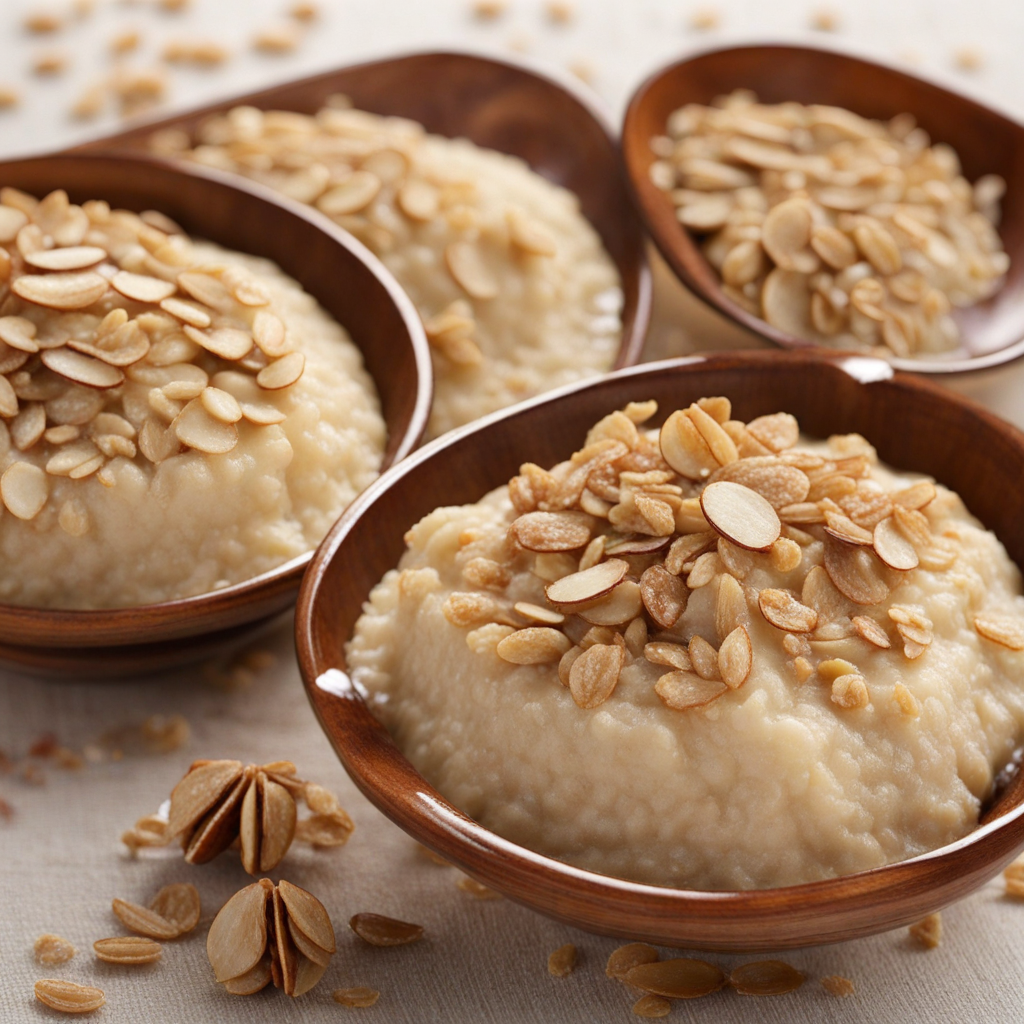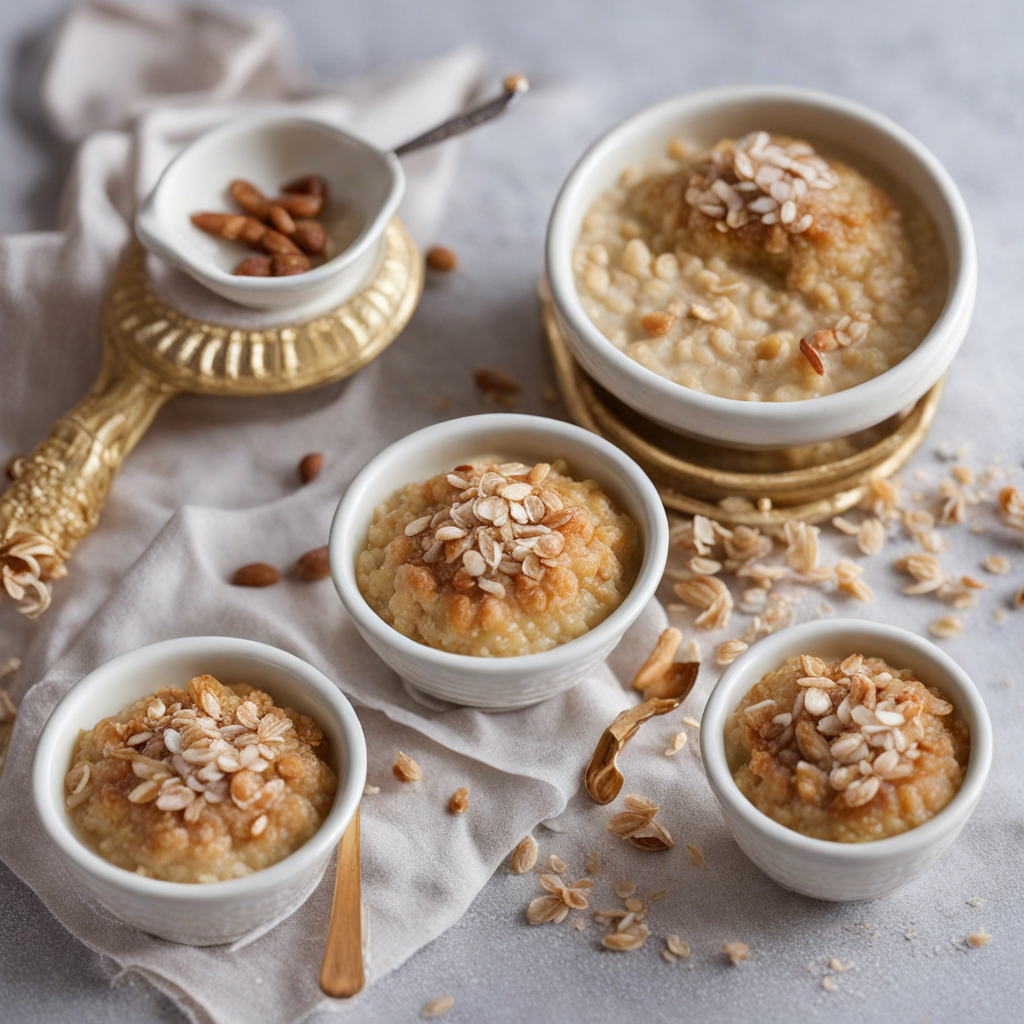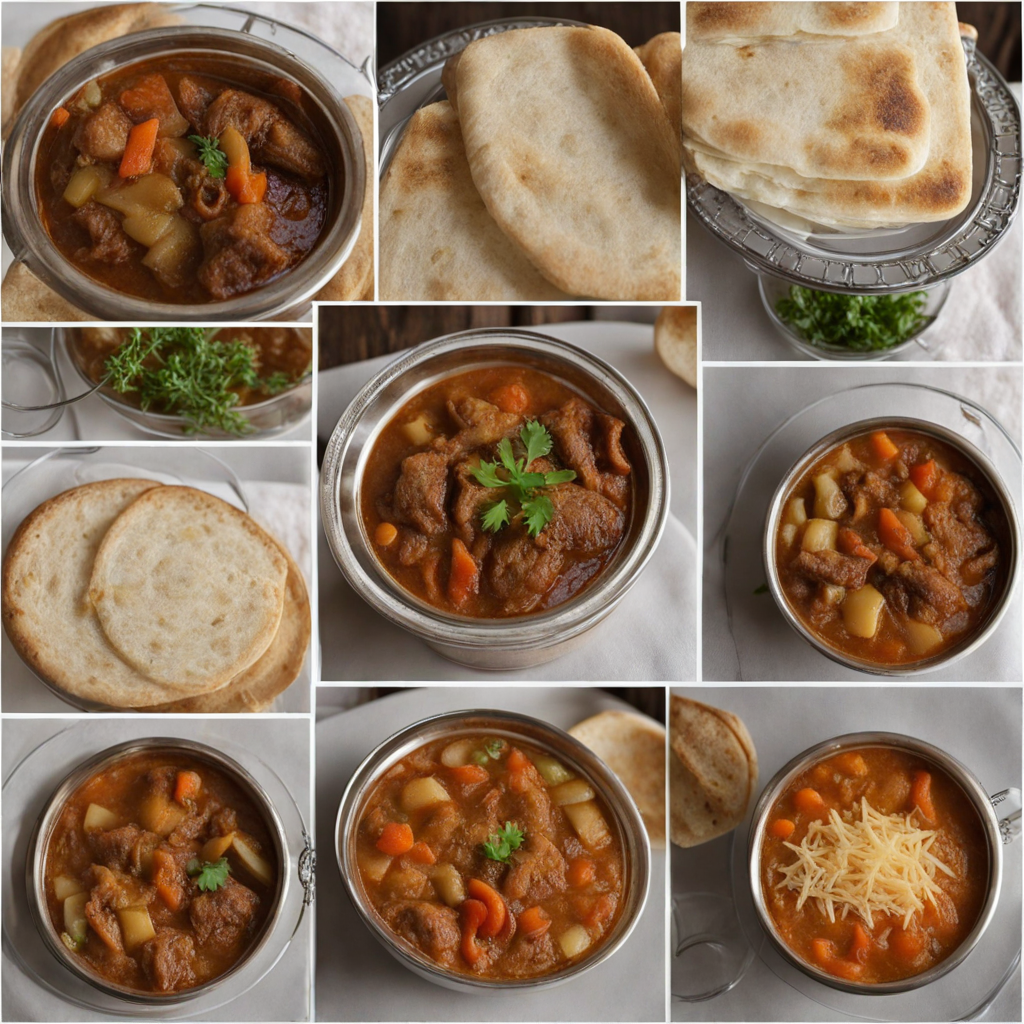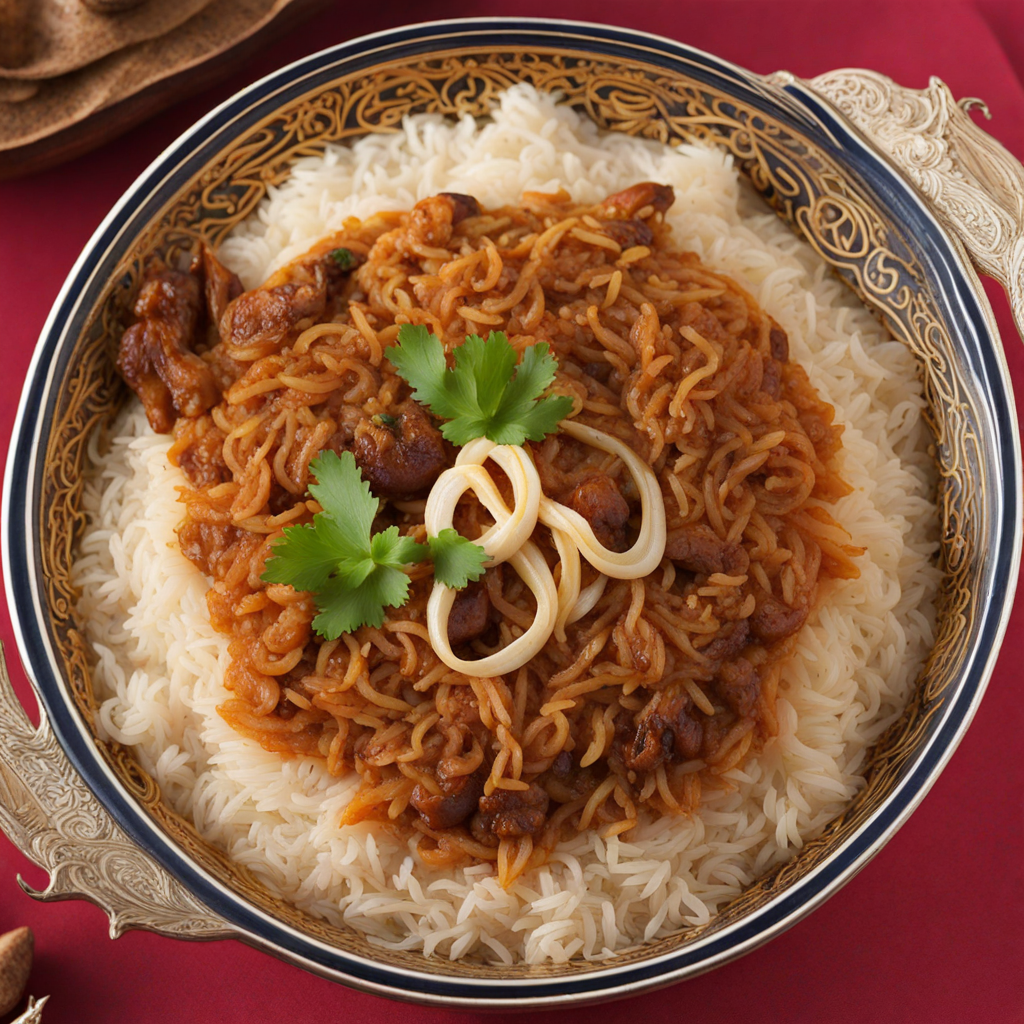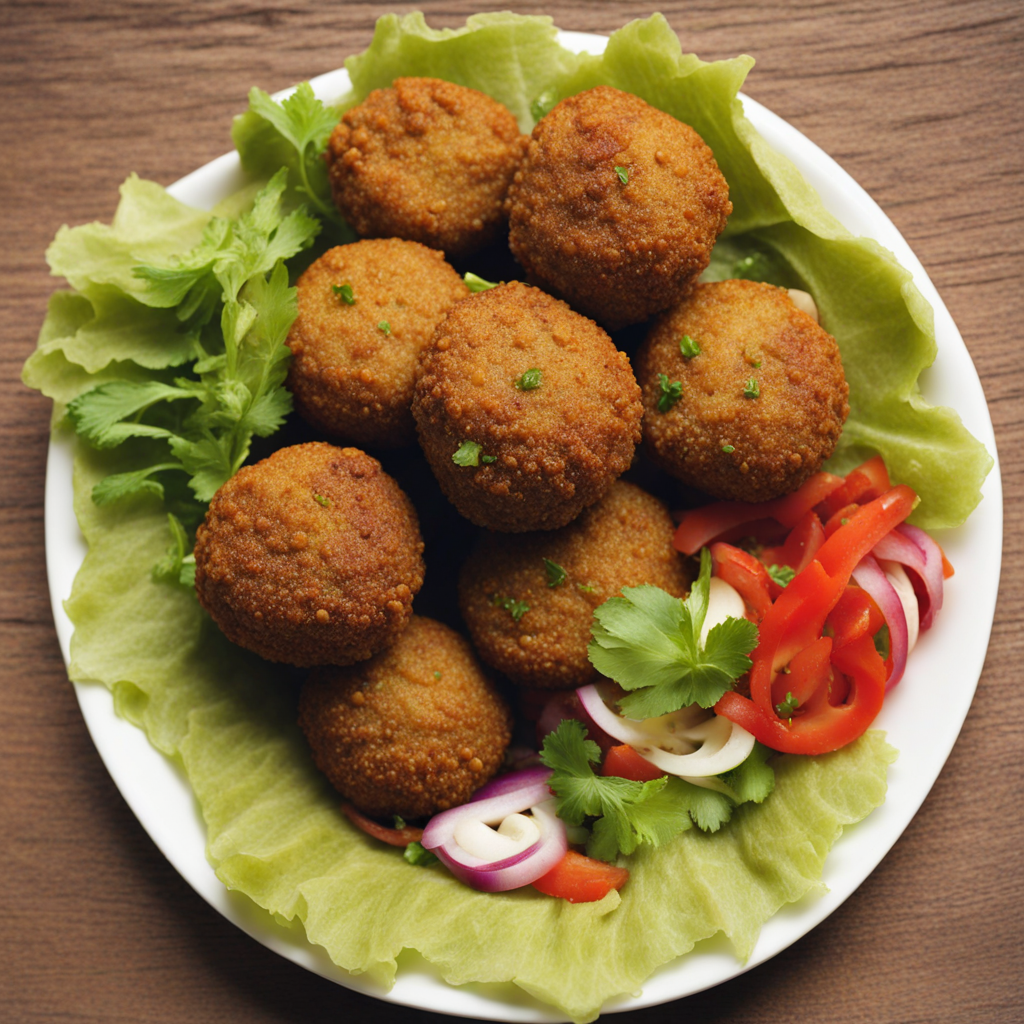Khabeesa
Khabeesa is a traditional Emirati dish that delights the senses with its unique blend of flavors and textures. This sweet treat is made primarily from roasted wheat flour, which is skillfully mixed with ghee, sugar, and a variety of aromatic spices, such as cardamom and saffron. The result is a rich, golden mixture that is both fragrant and inviting. The use of wheat flour gives Khabeesa a slightly grainy texture, while the ghee adds a luxurious creaminess, making each bite a comforting experience for the palate. What sets Khabeesa apart is its versatility; it can be enjoyed as a breakfast dish or served as a dessert during festive occasions and gatherings. The sweetness can be adjusted to personal preference, allowing for a balance between the natural nuttiness of the wheat and the sugary essence. Some variations may include the addition of nuts or dried fruits, which contribute to the dish's overall richness and make it even more satisfying. The warm spices not only enhance the flavor but also evoke a sense of warmth and nostalgia, often reminiscent of family gatherings and home-cooked meals. Khabeesa is also a dish that embodies the spirit of Emirati hospitality, as it is often shared with guests as a gesture of welcome. Its preparation is a labor of love, requiring attention and care, which reflects the deep-rooted traditions of the region. Whether enjoyed alone or alongside a cup of Arabic coffee, Khabeesa offers a delightful glimpse into the culinary heritage of the United Arab Emirates, inviting food lovers to savor a taste that is both unique and memorable.
How It Became This Dish
The History and Cultural Significance of خبيصة (Khabeesa) in the United Arab Emirates #### Origin of خبيصة Khabeesa, a traditional Emirati dish, is a cherished culinary delight that holds a special place in the hearts and palates of the people in the United Arab Emirates (UAE). Its origins can be traced back to the Bedouin tribes, who relied heavily on simple and nutritious foods that could sustain them in the harsh desert environment. The dish is primarily made from wheat flour, dates, and ghee, ingredients that were readily available and provided essential nourishment for those leading a nomadic lifestyle. The word "khabeesa" itself is derived from the Arabic root "خ ب ص," which relates to mixing or blending, aptly describing the preparation method that involves combining various ingredients to create a cohesive dish. While the exact timeline of its inception is difficult to pinpoint, it is believed that khabeesa has been prepared for centuries, evolving alongside the cultural practices of the UAE. #### Cultural Significance Khabeesa is more than just a dish; it represents the hospitality and generosity of Emirati culture. It is often prepared during significant occasions and celebrations, such as weddings, Eid festivities, and family gatherings. The dish embodies the values of sharing and community, as it is typically served in large quantities for people to enjoy together. In many households, the preparation of khabeesa is a communal event, where family members come together to mix, cook, and share stories, strengthening familial bonds and cultural ties. In Bedouin culture, khabeesa was also viewed as a symbol of resilience and adaptability. The ingredients used in khabeesa are not only nutritious but also have a long shelf life, making them ideal for nomadic living. The dish served as a reminder of the resourcefulness of the Bedouins in utilizing what was available to them while maintaining a sense of comfort and tradition. #### Development Over Time As the UAE transitioned from a primarily nomadic lifestyle to a more urbanized society, the preparation and consumption of khabeesa underwent changes, reflecting the broader transformations in Emirati culture. With the discovery of oil in the mid-20th century and the subsequent economic boom, the food landscape in the UAE began to diversify. While traditional dishes like khabeesa remained popular, new culinary influences from around the world began to emerge, leading to a fusion of flavors and techniques. Despite these changes, khabeesa has maintained its status as a beloved Emirati dish. Modern-day chefs and home cooks often experiment with variations of the traditional recipe, incorporating new ingredients or techniques while respecting the essence of the original dish. Some versions may include spices such as cardamom or saffron, while others might add nuts for added texture and flavor. This adaptability ensures that khabeesa remains relevant in contemporary cuisine while still honoring its historical roots. #### Ingredients and Preparation The traditional preparation of khabeesa is relatively straightforward, combining basic ingredients that are staples in Emirati households. The main components include: 1. Wheat Flour: The foundation of khabeesa, wheat flour is often roasted before being mixed with other ingredients. This roasting process adds a depth of flavor and a nutty aroma to the dish. 2. Dates: A key sweetener in khabeesa, dates not only contribute natural sweetness but also provide essential nutrients and energy. They are typically chopped and mixed into the dish. 3. Ghee: This clarified butter is an essential ingredient, adding richness and a distinctive flavor to khabeesa. In some variations, vegetable oil may be used as a substitute. 4. Water or Milk: To achieve the desired consistency, water or milk is added to the mixture, helping to bind the ingredients together. The preparation process typically involves roasting the flour in ghee until it turns a golden brown, followed by the addition of dates and water or milk. The mixture is stirred continuously until it reaches a thick, dough-like consistency. Once cooked, khabeesa can be shaped into small balls or served in a platter, garnished with nuts or additional ghee for presentation. #### Khabeesa in Contemporary Culture In recent years, there has been a resurgence of interest in traditional Emirati cuisine, with khabeesa at the forefront of this culinary revival. Restaurants across the UAE are increasingly featuring khabeesa on their menus, often alongside other traditional dishes, as part of a broader effort to celebrate and preserve Emirati heritage. Food festivals and cultural events also showcase khabeesa, allowing locals and tourists alike to experience this beloved dish. Furthermore, social media has played a pivotal role in popularizing khabeesa among younger generations. Many Emiratis share their own family recipes and variations on platforms like Instagram and TikTok, fostering a sense of pride in their culinary traditions and encouraging others to explore and experiment with traditional dishes. This digital sharing of recipes and experiences helps to keep khabeesa alive in the collective memory of the community. #### Conclusion Khabeesa is a dish that embodies the rich history and cultural significance of the United Arab Emirates. From its origins in Bedouin culture to its modern-day adaptations, khabeesa serves as a testament to the resilience and resourcefulness of the Emirati people. As a symbol of hospitality, community, and tradition, khabeesa continues to be cherished by generations, bridging the past and present in a way that is both delicious and meaningful. In a rapidly changing world, khabeesa stands as a delicious reminder of the importance of preserving culinary heritage while also embracing innovation. As the UAE continues to grow and evolve, dishes like khabeesa will undoubtedly play a vital role in maintaining the cultural identity and shared history of the Emirati people.
You may like
Discover local flavors from United Arab Emirates


